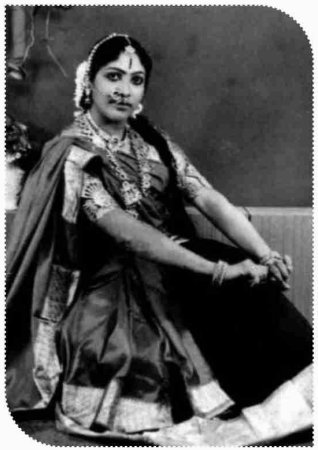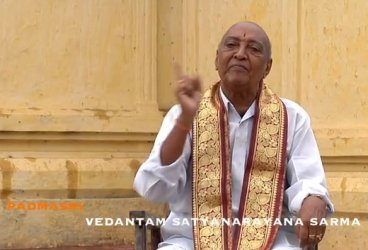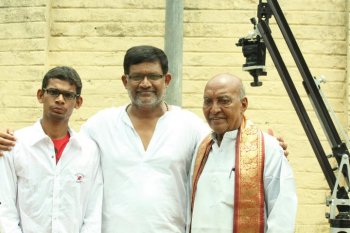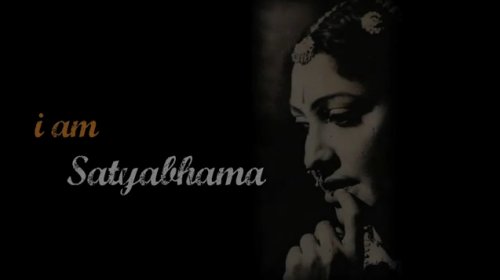Narthaki

News

Info

Featured


|
 |
Dulam Satyanarayana on his documentary ‘I am Satyabhama' - Sudha Sridhar e-mail: sudhasridhar@hotmail.com May 8, 2013  Vedantam Satyanarayana Sarma in Bhama Kalapam Dulam Satyanarayana, an award winning documentary film maker has recently made a documentary on Kuchipudi classical dance form and one of the greatest exponent of our times, Vedantam Satyanarayana Sarma, titled ‘I am Satyabhama.' Dulam, who had per se not much exposure to art, had destiny weave its course. He shares with us as to how he came to do this documentary and the indelible impressions it has created. How did it all begin - making documentary films as against the most sought after film making? I always loved watching films, but it never occurred to me that one day I could or would ever make films. Initially, like most of my peer group, I wanted to become an engineer, a cricketer or an IAS officer. But around the age of 20, my inner feelings and thoughts pointed to me that making films was going to be my medium of activity. I realized that I had been harboring this idea inside me subconsciously for a long time. Then I started delving deep into it to understand the language of film making. Film as medium of communication is uniquely powerful. As a filmmaker, I strongly believe that documentaries contribute to a vibrant present, reflect on the past, and inspire a rich and harmonious future. Bringing important issues and themes into living rooms, schools, community centers and cinemas of the nation can educate, inspire and drive fundamental social change with long lasting effects. This has been the underlying theme of my documentary works. How were you drawn to art and dance, to the subject that you had selected for making the documentary? The first two documentaries that I made were on social issues, bringing out the sufferings of the affected. I started with a documentary ‘Moushuni' which focuses on a remote village in Sunderbans which lacked electricity till 2001. Particularly after the exhausting and soul searching documentary on the ‘Dreadful Fate' of people suffering due to Flourosis, I was looking forward to portray a success story. A documentary on the lines of people who instead of being despondent due to circumstances, rise up to overcome all the obstacles to show and prove that the human will and spirit is all that matters in the end to endure and reach the pinnacle of excellence in life. It was with this mindset that I stumbled upon the Kuchipudi classical dance form and the village - the primary seat of the art form for centuries now. My research also pointed out that while there were quite a few documentaries on artistes from other classical dance forms like Bharatanatyam, Mohiniattam and Kathakali, there are no documentaries as far as my knowledge goes, showcasing the glory of Kuchipudi art and artistes to the world at large. What were your thoughts the first time you met Vedantam Satyanarayana Sarma, since he was going to be the subject of your documentary? First, I went for taking only an interview of Vedantam Satyanarayana Sarma, that too almost immediately within an hour of landing in Kuchipudi village, through Shri Keshava Prasad's reference. Vedantam Satyanarayana Sarma came across as a very simple, humble person with no trace of any airs whatsoever about him, especially for one who has won so many laurels and awards including Padma Shri to his credit. Being conservative by nature, initially he was not very eager to see the possibility and he did take some time to open up to the whole idea of the documentary film. Though my original intent was to cover the dance form as a wholesome subject, after meeting Vedantam Satyanarayana Sarma, I changed my mind, vastly influenced by his great personality, his passion for the art form, his life time dedication to the roles (particularly the female impersonation) that he portrayed, positive approach to art and life in general. It dawned on me that through a documentary on the life and times of a legendary artiste, one can easily connect to the subject with much more authenticity and credibility. Kuchipudi was an essential part of his life or one can safely say that it was his life. Through his story, I depicted the village and its art form too.  Vedantam Satyanarayana Sarma  Dulam Satyanarayana, Tanikella Bharani & Vedantam Satyanarayana Sarma The theme would surely have taken quite a few adaptations during the course of filming. The major change the project took course was the sequence of what started as a documentary on Kuchipudi dance based on elaborate research undertaken, ending up with ‘I am Satyabhama' a documentary on the life and times of Vedantam Satyanarayana Sarma through which the classical dance form Kuchipudi is documented. I strongly believe that it is really a spark of divine intervention that enabled such a pleasant change in our scheme of things. To know about Kuchipudi dance form, one needs to go to the Kuchipudi village and visit the Bhagavathamelam, the progenitors of the art form, further leading to the seer of the village, Siddhendra Yogi and natural corollary of his epic contribution among others, the personification of the character Satyabhama through his famous Kalapam - Bhama Kalapam. So my idea of covering a documentary on Kuchipudi got a further boost. The documentary on Vedantam Satyanarayana Sarma, the best of our times to portray Satyabhama, led to Siddhendra Yogi, the maker of the great Bhama Kalapam, who is from the hallowed heritage village of Kuchipudi and then to its classical dance form Kuchipudi. Thus through ‘I am Satybhama' while documenting the life and work of Vedantam Satyanarayana Sarma, I had the fortune of bringing out the glory all the four aforesaid aspects. Inspired by the narrative style adopted in the Bhama Kalpam, I too wanted to narrate the documentary in the same fashion as Siddhendra Yogi had done wonderfully in his great kalapam, through just three characters (Satyabhama, Madhavi and Sri Krishna). Thus the documentary also weaves through three major aspects in entirety the artiste Vedantam Satyanarayan Sarma, the narrator and facilitator Tanikella Bharani to bring out the facts and the Ramalingeswara temple, as the third character, witness to the glory and growth of the art form in the village and beyond. That is the uniqueness of the documentary. Just like how Siddhendra Yogi used just three characters to bring out the essence in Bhama Kalapam, I have tried to document Kuchipudi dance form in the same fashion. It is a documentary which will keep the viewers engrossed right through. Through the epic Kalapam and the most revered exponent, the documentary throws more light on the art form, the village, the artistes who have for generations upheld the rich traditions handed over to them and in particular their dedication, the religious and almost spiritual approach to maintain the purity against all odds. How forthcoming was the legend in sharing his personal and professional experiences, feelings, thoughts... It is really unique to hear about the journey of the stalwart in his own words aided by the interviewer in bringing out the much desired changes in mindset, trials, triumphs, overcoming challenges and the divine intervention that the artiste had gone through all his life to become a shining example of the art form. Once Vedantam opened up to the idea of ‘I am Satyabhama' there was no stopping him and he put his wholehearted effort to make it a very purposeful and fulfilling experience for all to cherish. Are you planning on more documentaries on the subject? I started with almost no knowledge about the art world itself, leave alone about Kuchipudi dance, but now after all the work that has gone into making of this documentary I am toying with the idea of making at least a couple of more documentaries on the same lines, probably showcasing the glory of Kuchipudi Yakshaganam to start with, impact of the works of Dr. Vempati Chinna Satyam and his creations, etc since there is a lot to cover for posterity with regard to Kuchipudi. How much did you feel that the artiste and the art were inseparable in life? Vedantam's lifelong involvement in the art form does throw up the fact that in a legend's life the artiste and art are inseparable and one can feel that is almost a sort of left over samaskaras of the earlier lives that legends are made up of. The inner quest and belief to succeed, the hard work, constant efforts to excel, the indomitable will to continue at all odds are all etched in the journey of Vedantam, more so appreciated in his portrayal of female roles all through his life earning accolades worldwide from diverse audiences. What is the basic lesson one can learn from the legend after watching him? Could you share some insight into his personality, the qualities that struck you throughout the shooting of the film? Vedantam Satyanarayana Sarma came across as an incorrigibly optimistic, very strong positive person who exuded equanimity, poise, confidence in all his activities. His dedication to the art form and the roles that he portrayed so naturally shared by him in the documentary shows his genuine uncomplicated simplicity, a rarity among contemporary celebrities. His life story brings out naturally the various fundamental principles of life, like acknowledging one's purpose in life, dedication to achieve, wait in patience for divine intervention in surrender even under most trying circumstances due to the inner quest for achievement, the motto to cooperate with the almighty in the earthly plane. In his own words, Vedantam said, "Unless one sinks totally in water one cannot swim; similarly the best doesn't come out from an artiste unless he is totally immersed in it." What were your feelings when you could not show the final documentary to Vedantam Satyanarayana Sarma and get it released personally by him? I did manage to show the documentary in the uncut stages to him at the heritage village, but yes, the fact that it could not be released by him personally will be one of the things that we have to live with as an incomplete agenda. But the fact that he made it possible to document his insights in the film in his own words is definitely a boon for all posterity. Your acknowledgements. A documentary of this nature has far too many contributions to name in an interview. Primarily I would like to place on record my acknowledgements to the main character of the documentary, Vedantam Satyanarayana Sarma, for having believed, shared our vision in bringing out this documentary and whole heartedly sharing his life / work and enriching the documentary with his presence. Kesava Prasad and his sons for their unstinted support right through. The entire Kuchipudi fraternity (Bhagavathamelam) in the village including the youngsters and the doyens, and my crew members who stood beside me for the extraordinarily long period in making of the documentary. When I had started the project in November 2010, I hadn't estimated the scale of the project and by the time I had finished the research and pre-production phase by June 2011, I realized that I would have to seek out investors and producers in order to realize the potential of ‘I am Satyabhama.' Consequently, Swathi Gundapuneedi, a New Jersey based dancer and guru agreed to fund the film.  Key credits of the documentary ‘I am Satyabhama' Producer: Swathi Gundapuneedi Director / Executive Producer: Dulam Satyanarayana Interviewer: Tanikella Bharani Cinematographer: Sharath Reddy / Ravi Babu Editor: Shravan Katikaneni Sound Designer: Prince Anslem Music Supervision: Pemmaraju Suryarao Associate Producers: Tadepalli Satyanarayana Sarma / Vijay Uddaraju / Krishna Pillalamarri / Phanisri Kuchibhotla Line Producer: P Kesava Prasad Supported by: Kuchipudi Art Academy / Kuchipudi Bhagavatha Melam / Akila Bharatha Kuchipudi Natyakala Mandali Film Archives: Films Division India Contact: dsnfilms@gmail.com  Post your comments Unless you wish to remain anonymous, please provide your name and email id when you use the Anonymous profile in the blog to post a comment. All appropriate comments posted with name & email id in the blog will also be featured in the site. |